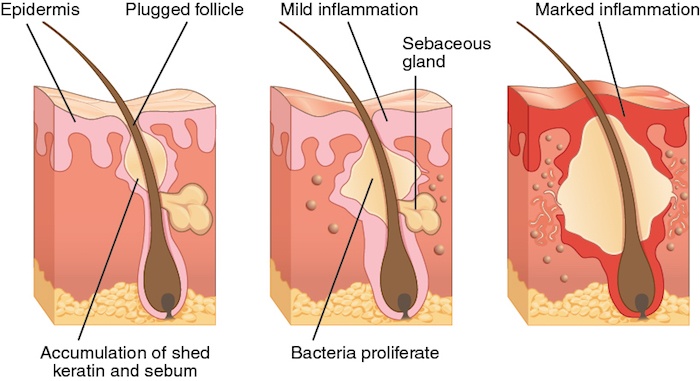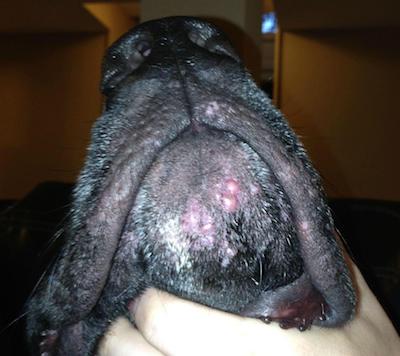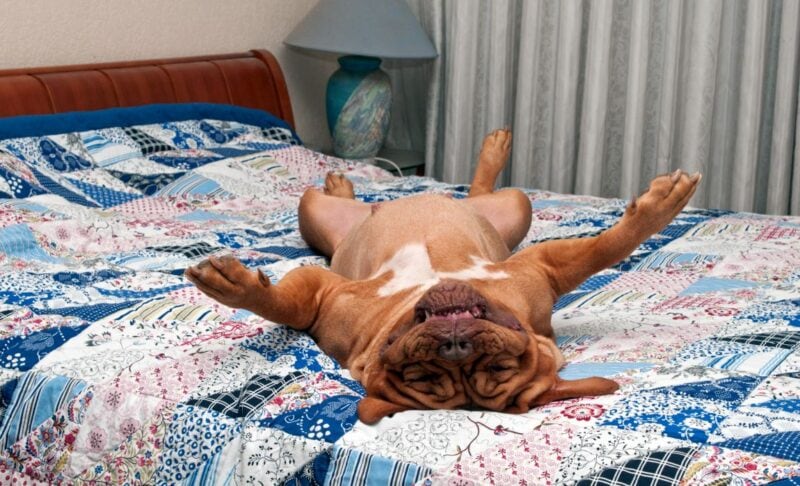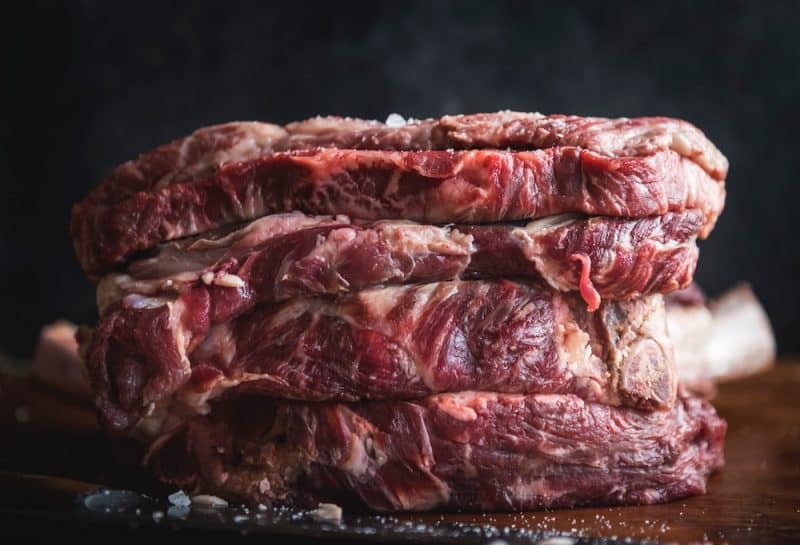More than one dog owner has freaked out at the sight of a horrible pustule or two adorning their dog’s face. And while it’s always wise to have these kinds of things checked out by a veterinarian, many times the troublingly familiar flaw is nothing more than acne.
That’s right – dogs can and do get acne, just like you did while you were a teenager (or, occasionally, as one grows older. I mean, seriously, how does a 40-year-old still get zits? But I digress…)
An acne diagnosis rarely signifies any sort of serious problem, and most cases will resolve on their own, without any effort on your part.
Additionally, there are several medications your vet can prescribe to treat the problem if it doesn’t disappear in time, so take a deep breath, relax and learn a little more about your pup’s problem.
What Exactly Is a Dog Pimple?
Just like their human owners, dogs possess sebaceous glands in their hair follicles.
These glands normally produce protective oils that protect the hair and keep the skin supple, but at times, these glands become clogged or otherwise irritated.
Unable to escape the gland, the oil (sebum) backs up, causing the area to become raised and inflamed. Eventually, the skin breaks or the clog ruptures, allowing the contents of the zit to drain.

Dogs can develop several different types of zits, including whiteheads, blackheads or enclosed pimples. These all arise for the same reason (clogged hair follicles), but they differ based on the degree to which the follicle is clogged and the depth at which the clog occurs.
Dogs usually get zits in several characteristic areas, including the muzzle, chest and genital area, but they can occur virtually anywhere.
While canine acne is a common and relatively minor problem, some other conditions, such as bacterial infections, can look quite similar to the untrained eye.
So, it is still wise to have your vet check out your canine — especially if this is the first time you’ve ever seen zits appear.
Why Do Dogs Get Zits?
Dogs develop acne for many of the same reasons humans do. Some of the contributing factors include:
- Age – Dogs are probably most susceptible to acne during their adolescence (just like the terrible teething stage), even though it can occur at any time in their life. Frequently, dogs that suffer from acne while young will experience recurrences as they age.
- Poor Hygiene – Dirt and other debris can clog your dog’s follicles, which can lead to the development of acne, so bathe your dog regularly to keep her clean. Note that poor doggie dental hygiene may also contribute to acne, so be sure to brush your dog’s teeth periodically and feed her a tooth-cleaning chew treat or kibble to help prevent zits (and bacterial infections in and around the mouth) from forming.
- Hormonal Changes – Just as occurs in humans, acne can flare up in response to hormonal fluctuations, such as heat cycles. Spayed females do not experience the same hormonal fluctuations that unaltered females do, which provides yet another reason to have your pooch fixed.
- Friction – Friction and poor hygiene can increase the likelihood of follicular irritation, which can lead to pimple formation. This kind of friction may arise from things like poorly sized collars and harnesses, so be sure to use the proper size for your dog and inspect the area underneath collars and other items regularly.
- Individual Susceptibility – Just like some people are more prone to suffering from acne than others are, some dogs appear to be the same way. In such cases, you’ll just have to reduce the other risk factors for acne as much as possible and do your best to treat your pup’s acne as it surfaces.
Breed Susceptibility: Which Breeds Break Out More?
Acne is far more common among some dog breeds than others. It is wise to prepare yourself for this possibility at the outset, so that you won’t be surprised by the appearance of a few zits.
Some of the breeds that are most susceptible to acne include:
- Rottweilers
- Boxers
- Great Danes
- Dobermans
- English bulldogs
- Mastiffs
- Weimaraners
- Pugs
- Pit bulls and American Staffordshire terriers
You’ve probably noticed that these breeds all have short hair, which is likely a factor that contributes to their acne susceptibility. Just be sure that you do all that you can to preempt acne if you own one of these breeds.
Is Dog Acne a Serious Problem?
Any open wounds can become infected, so it is important to keep your dog clean while battling zits, but acne rarely poses a larger problem.
Particularly bad acne may lead to scars, but unless your dog is a professional model or show dog, this shouldn’t change her life much.
You should still make an appointment with your vet to ensure that your dog’s bumps are actually zits, and not some other malady, but acne itself is a pretty low-risk condition.
Bacterial infections are probably the most dangerous threat that may accompany acne, but the chances of such infections can be reduced with good hygiene.
How Do You Treat Dog Acne?
While your dog’s acne is likely to clear up on its own, there are a number of acne treatments available to treat pernicious or particularly severe cases.
Medicated shampoos may help clear up your pup’s skin, but your vet can also prescribe medications that may solve the problem.
Some vets may prescribe benzoyl peroxide gels or creams to address the issue. While this is the same active ingredient found in many human acne treatments, you should never use a human medication for your dog without first consulting with your vet. They are formulated differently, and the human-grade versions may be too strong for your dog’s delicate skin. At other times, your vet may feel that antibiotics or steroids are more likely to resolve the issue.
But whatever you do, don’t pop your dog’s zits. It isn’t necessary, and it only serves as a way to introduce bacteria into the wound and damage the skin surrounding the zit. Besides, they’ll usually drain on their own, if simply left alone.
***
My Rottie developed some acne on her chin and upper lips at around 1 year of age. It wasn’t that surprising, given her breed, but it was still disheartening to see my otherwise-gorgeous pup develop pustules on her face. Fortunately, the zits eventually disappeared without any medications or treatments, other than my efforts to keep her face clean.
But what about you? Has your pup ever suffered from acne? We’d love to hear about your experiences. Did it resolve on its own, or did it require medications? Share your story in the comments below!









Leave a Comment